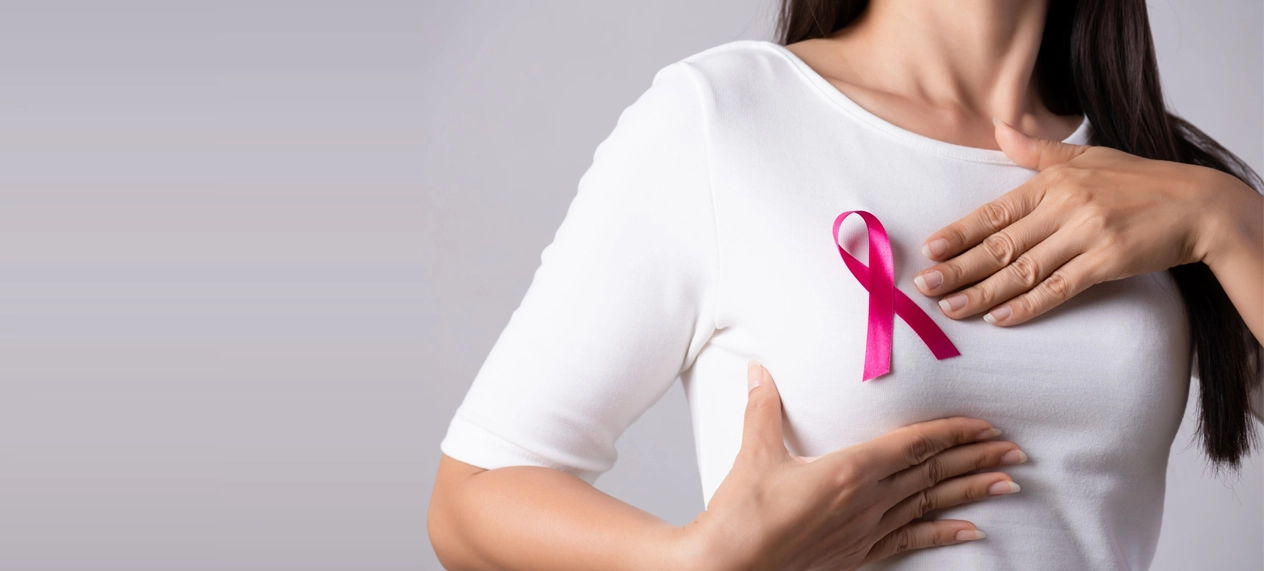
Breast cancer is a disease in which the breast cells grow uncontrollably. Abnormal cells collect as a lump, invade neighbouring tissue or spread to distant parts of the body. This disease may also affect males, although this is rare. With advances in early detection and tailored treatment for breast cancers, survival rates are much greater than they were in the past.
It is important to be aware of the early signs and symptoms of breast cancer to seek further evaluation in a timely manner. Most of the time, women discover breast cancer when performing a breast self-exam or through routine screening. Noteworthy early signs of potential breast cancer are:
A new lump or area of thickening in your breast or your underarm
It is critical to keep in mind that not all lumps are cancerous; there are many lumps that occur as a result of benign conditions. Still, if you notice any of these changes, please see a health care provider promptly.
Read Also: How To Self-Examine For Breast Cancer: Essential Steps And Tips
Breast cancer signs can be subtle or obvious and not everyone will have the same symptoms. Common signs, along with lumps, include:
Self-awareness and regular screening are the basis of good breast cancer care. The sooner that changes are detected, the easier and more successful breast cancer treatment will be.
The stage of breast cancer is representative of how far cancer has spread. Staging determines the best choice of treatment and estimates outcome. The main stages are as follows:
Every stage of breast cancer will require a unique treatment approach to achieve the best results overall.
Also Read: Breast Cancer Surgery: What To Expect And How To Prepare
When there are signs and/or symptoms of breast cancer, several tools will be used by physicians to diagnose breast cancer, including:
The stage you are diagnosed will have a large effect on the recommendations for treatment of breast cancer.
Breast cancer treatment plans will be individualized to each patient based on cancer stage, tumor type, and patient preference. The most common treatment for breast cancer approaches include:
Every treatment plan attempts to balance the effectiveness of managing the cancer, with the consequences of preserving breast appearance and well-being.
It is the surgical removal of one or both breasts; it is usually done for the treatment or prevention of breast cancer. There are different types:
After surgery many women choose breast reconstruction to restore the shape of their breast. Working with a specialized care team can help make it smoother and give peace of mind, while resolving this important part of care for breast cancer.
Chemotherapy for breast cancer is a very strong and aggressive treatment, targeting cancer cells in the body through various mechanisms. Chemotherapy may be utilized:
Before surgery (for tumor shrinkage)
General side effects may include fatigue, nausea, hair loss, and decreased immunity; they generally improve after treatment. As today’s supportive care advances, decreasing side effects and helping maintain quality of life during chemotherapy.
Survivorship is an important aspect of breast cancer care. Follow-up visits, scans, and blood tests are performed after the treatment is over. Physical therapy, emotional support, and leading a healthy lifestyle are vital for recovery. Breast cancer survivors are encouraged to share their story and lean on their personal support systems.
Q1: What are the main breast cancer symptoms?
A: Common breast cancer symptoms include a new lump in the breast or armpit, changes in breast shape, nipple discharge, and persistent pain. Not all lumps are cancerous, but prompt evaluation matters.
Q2: How is breast cancer treatment decided?
A: The treatment is based on the cancer’s stage, size, type, and patient preference. Options include surgery, breast cancer chemotherapy, radiation, and targeted therapies.
Q3: What are early breast cancer symptoms to watch for?
A: Early breast cancer symptoms often include changes like a small lump, nipple discharge, or new skin dimpling. Regular self-exams and mammograms help spot these signs quickly.
Q4: Is mastectomy always required for breast cancer?
A: No, mastectomy is not always required. Some women have a lumpectomy, which removes only the tumor. It may be needed if cancer is widespread or in certain high-risk cases.
Q5: How can I support someone during breast cancer care?
A: Offer emotional support, accompany them to appointments, encourage healthy habits, and simply listen. Compassion is a vital part of breast cancer care and recovery.